Blog
Jewellok is a professional pressure regulator and valve manufacturer and supplier.
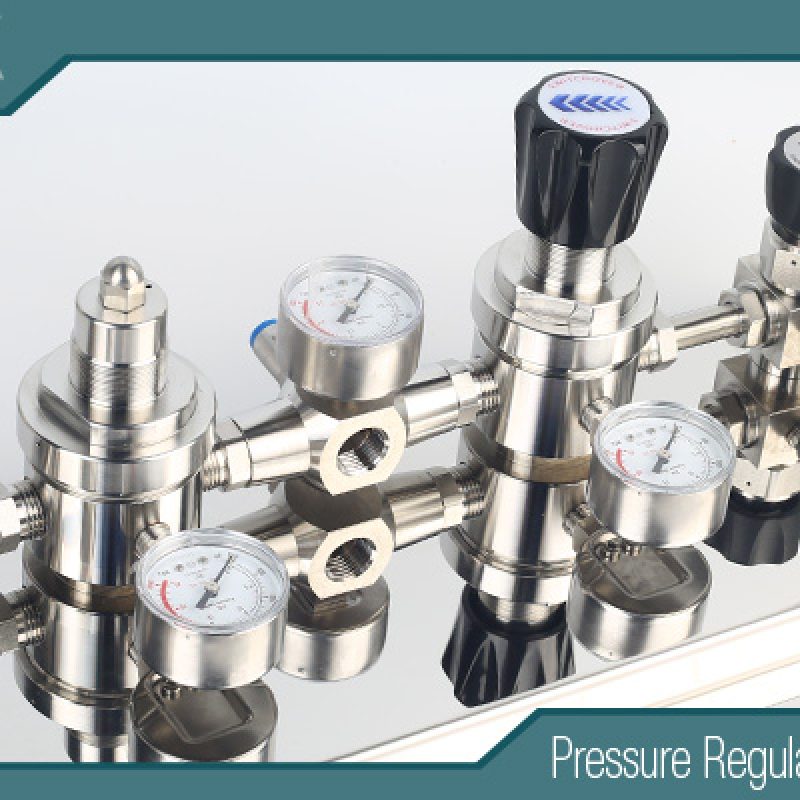
A Closer Look at How a Single-Stage Propane Regulator Works
- Pressure Regulator Valve Manufacturer
- 0-30 psi propane regulator with gauge, 1 2 propane regulator, 2 stage propane regulator vs single stage, 2-stage propane regulator for home, adjustable high pressure propane regulator, adjustable low pressure propane regulator, adjustable low pressure propane regulator with gauge, adjustable low pressure propane regulators manufacturer, adjustable propane regulator, adjustable propane regulator with gauge, air pressure regulator electronic control, Automatic Changeover Systems with Electronic Controls, best auto changeover propane regulator, can industrial gas regulator be used in laboratory, China Industrial Gas Valve Manufacturer, CNG Delivery Pipeless Natural Gas Delivery, Custom Non-Electric Automatic Gas Changeover Systems, Electric high temperature ball valve, electric water valve, electro-mechanical control system, Electronic gas pressure regulators, electronic hydraulic pressure regulator, europe industrial diaphragm valve manufacturer, Gas changeover manifold for industrial applications, Industrial air pressure regulator manufacturer in china, industrial diaphragm valve, Industrial Filling CNG Valve, Industrial Flow Control Valves, Industrial gas changeover system, Industrial Gas Cylinder Valves India, Industrial gas manifold, propane regulator, single stage propane regulator, single stage propane regulator manufacturer, single-stage propane regulator supplier
- No Comments
A Closer Look at How a Single-Stage Propane Regulator Works
In the world of gas-powered appliances, from backyard grills to portable heaters and even some industrial equipment, propane serves as a versatile and efficient fuel source. At the heart of any safe and effective propane system lies the regulator—a device that might seem unassuming but plays a critical role in ensuring that high-pressure gas from a storage tank is delivered at a consistent, low pressure suitable for everyday use. Specifically, a single-stage propane regulator is one of the most common types encountered in residential and light commercial applications. This article takes a closer look at how these regulators function, breaking down their components, mechanics, and practical implications.
Propane, also known as liquefied petroleum gas (LPG), is stored under high pressure in tanks to keep it in liquid form for efficient storage and transport. When released, it vaporizes into a gas that can be burned for heat or energy. However, the pressure inside a typical propane tank can range from 100 to 200 pounds per square inch (psi), depending on temperature and tank size—far too high for most appliances, which require around 0.4 to 0.5 psi (or about 11 inches of water column) to operate safely and efficiently. Without regulation, this high pressure could damage equipment, cause leaks, or even lead to explosions.
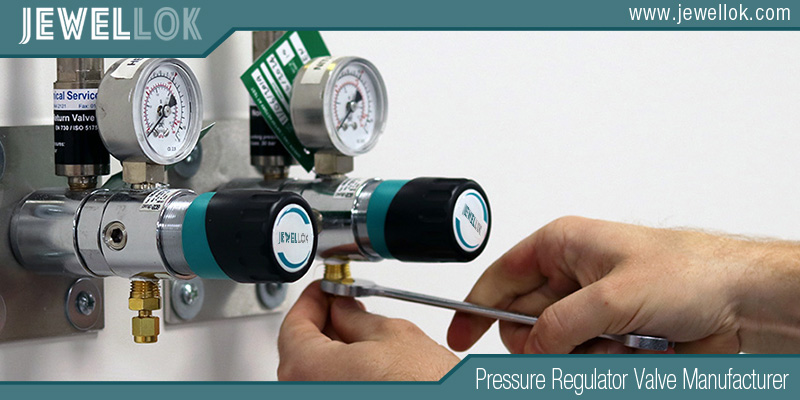
A single-stage regulator addresses this by reducing the inlet pressure in one straightforward step, delivering a stable outlet pressure directly to the appliance. Unlike two-stage regulators, which perform pressure reduction in two phases for greater precision in larger systems, single-stage models are simpler, more compact, and cost-effective for smaller setups. Understanding how they work not only demystifies the technology but also empowers users to handle maintenance, troubleshooting, and safety with confidence. In this exploration, we’ll delve into the fundamental principles, dissect the key components, explain the operational mechanism step by step, discuss advantages and limitations, and cover essential maintenance tips. By the end, you’ll have a comprehensive grasp of this essential device.
The importance of regulators extends beyond mere functionality; they are a cornerstone of safety in propane systems. According to industry standards, proper pressure control prevents over-pressurization, which could lead to catastrophic failures. For instance, in a home grilling scenario, a malfunctioning regulator might allow too much gas to flow, increasing the risk of flare-ups or fires. Conversely, insufficient pressure could result in incomplete combustion, producing harmful carbon monoxide. As we proceed, we’ll reference established engineering principles and practical insights to paint a clear picture of these regulators in action.
Background and Evolution
The concept of pressure regulation in gas systems dates back to the 19th century, coinciding with the rise of gas lighting and heating in urban areas. Early regulators were rudimentary, often using weighted diaphragms or simple valves to control flow. The modern single-stage propane regulator evolved from these designs, refined through advancements in materials science and precision engineering during the 20th century.
Propane itself became widely used as a fuel in the 1920s, particularly in rural areas without natural gas pipelines. Regulators were essential from the start to adapt high-tank pressures to appliance needs. Today’s single-stage models are typically made from durable materials like brass or aluminum, designed to withstand outdoor conditions and corrosive elements. Organizations such as the National Fire Protection Association (NFPA) and the American Society of Mechanical Engineers (ASME) have established guidelines, like NFPA 58 for LP-gas systems, ensuring regulators meet safety benchmarks.
In comparison to natural gas regulators, propane versions must handle higher inlet pressures and the unique properties of LPG, which can include traces of moisture or impurities that affect performance. The single-stage design gained popularity for its simplicity—no need for intermediate piping or multiple units—making it ideal for portable applications like RVs, camping stoves, and emergency generators. Over time, features like built-in vents and overpressure protection have been integrated, enhancing reliability.
Basic Principles of Pressure Regulation
At its core, pressure regulation relies on the balance of forces within a closed system. In fluid dynamics, pressure is defined as force per unit area, and regulators manipulate this to achieve a desired output. For propane, the regulator acts as a throttle, sensing changes in downstream demand and adjusting flow accordingly.
The key principle is feedback control: the regulator continuously monitors outlet pressure and responds to deviations. This is achieved through a mechanical equilibrium between opposing forces—typically a spring pushing to open a valve and gas pressure pushing to close it. When demand increases (e.g., turning on a burner), outlet pressure drops, allowing the spring to open the valve wider for more flow. When demand decreases, pressure builds, closing the valve to restrict flow.
Single-stage regulators perform this in one chamber, contrasting with dual-stage systems that use an initial high-pressure reduction followed by fine-tuning. This single-step approach is efficient but sensitive to inlet pressure variations; for example, as tank pressure drops with usage or cooling, the regulator must compensate without significant outlet fluctuations.
Propane’s behavior adds complexity. As a liquefied gas, its vapor pressure varies with temperature—higher in heat, lower in cold. A good regulator maintains consistent delivery despite this, often rated for temperatures from -40°F to 160°F. Concepts like “droop” (the drop in outlet pressure as flow increases) and “lockup” (the slight pressure rise needed to fully close the valve) are critical metrics. Lower droop indicates better performance, especially in variable-demand scenarios.
In engineering terms, the regulator follows Bernoulli’s principle, where fluid velocity and pressure are inversely related, but it’s more about orifice control than fluid speed. Safety features, like relief valves, vent excess pressure to prevent buildup, ensuring the system stays within safe limits.
Components of a Single-Stage Propane Regulator
A single-stage propane regulator is a compact assembly of interconnected parts, each contributing to pressure control. Let’s break them down:
- Inlet Connection: This is the threaded port that attaches to the propane tank’s outlet valve, often using a POL (Prest-O-Lite) fitting or ACME thread for secure, leak-proof connection. It’s designed to handle high inlet pressures up to 250 psi.
- Restrictive or Reducing Element: Typically a poppet valve or orifice. The poppet is a spring-loaded plunger with an elastomeric seal that seats against a valve opening. When open, it allows gas to flow; when closed, it seals the path. Materials like Buna-N seals ensure compatibility with propane.
- Sensing Element: The diaphragm is the “brain” of the regulator—a flexible membrane, often made of rubber or synthetic fabric, that divides the regulator body into high- and low-pressure sides. It senses outlet pressure changes and moves accordingly. In some designs, a piston replaces the diaphragm for higher pressures, though diaphragms are preferred for accuracy due to lower friction.
- Reference Force Element: A coiled spring provides the opposing force to the diaphragm. Attached to an adjustment screw or knob, it sets the desired outlet pressure. Compressing the spring increases pressure; relaxing it decreases it. Springs are calibrated for specific ranges, like 5-15 psi.
- Control Knob or Adjustment Mechanism: Allows users to fine-tune outlet pressure. In fixed models, this is preset; in adjustable ones, it’s user-accessible.
- Vent or Relief Port: A small opening that equalizes atmospheric pressure on one side of the diaphragm and vents excess gas if overpressure occurs. It’s crucial for safety, often screened to prevent insect entry.
- Body and Housing: Usually die-cast zinc, brass, or aluminum for durability and corrosion resistance. The body encloses all components, with ports for inlet, outlet, and sometimes gauges.
- Outlet Connection: Threads or barbs for hoses leading to appliances, ensuring low-pressure delivery.
Additional features might include filters to trap impurities, overpressure shutoff (OPSO) valves that close if pressure exceeds limits, and underpressure shutoff (UPSO) for low-flow detection. For propane, components must be rated for flammable gases, avoiding sparking materials.
These parts work in harmony, with the diaphragm and spring forming a dynamic balance. The design minimizes moving parts for reliability, but wear on seals or springs can lead to issues like leaks or inconsistent pressure.
Step-by-Step Working Mechanism
Understanding the operation of a single-stage propane regulator requires visualizing the gas flow and force interactions. Here’s a detailed, step-by-step breakdown:
- Initial Connection and Pressurization: The regulator is attached to the propane tank. When the tank valve opens, high-pressure gas (100-200 psi) enters the inlet port, filling the high-pressure chamber. At rest, the poppet valve is closed by default, preventing immediate flow.
- Setting the Pressure: Using the control knob, the user compresses the spring, which pushes down on the diaphragm (or piston). This force transfers to the poppet valve via a linkage, opening it slightly. Gas begins to flow through the orifice into the low-pressure chamber and out to the appliance.
- Pressure Build-Up and Sensing: As gas enters the outlet side, pressure builds against the underside of the diaphragm. This upward force opposes the spring’s downward force. The diaphragm moves upward when outlet pressure reaches the set point, pulling the poppet toward the seat and restricting flow.
- Equilibrium Achievement: The system reaches balance when spring force equals the product of outlet pressure and diaphragm area. For example, if set to 11 inches water column (about 0.4 psi), the valve opens just enough to maintain this. Atmospheric pressure, vented to the top of the diaphragm, serves as a reference, making the regulator “gauge pressure” based.
- Response to Demand Changes: If an appliance demands more gas (e.g., igniting a burner), outlet pressure drops momentarily. The diaphragm senses this, moving downward under spring force, opening the valve wider for increased flow until pressure stabilizes. Conversely, if demand drops, pressure rises, pushing the diaphragm up to close the valve.
- Handling Inlet Variations: Tank pressure fluctuates with temperature or depletion. Higher inlet pressure tries to force more gas through, but the diaphragm compensates by closing the valve further. However, in single-stage designs, large swings can cause “droop”—outlet pressure sagging under high flow—or “boost” under low flow.
- Safety Activation: If outlet pressure exceeds safe levels (e.g., due to a blockage), a relief valve opens, venting gas safely. Non-relieving models contain pressure internally, suitable for flammable propane to avoid atmospheric release.
- Shutdown: When the appliance is off and tank valve closed, residual pressure equalizes, and the poppet seals fully, preventing leaks.
This mechanism is self-regulating, requiring no external power—purely mechanical. In propane applications, it ensures vapor delivery without liquid carryover, critical for clean combustion. Factors like orifice size affect capacity; larger orifices handle higher flows but increase sensitivity to changes. Real-world example: In a gas grill, the regulator maintains steady flame height despite tank cooling during extended use.
Applications, Advantages, and Disadvantages
Single-stage propane regulators shine in portable and small-scale uses: grills, torches, heaters, and RVs. They’re compact, weighing under a pound, and easy to install without complex piping.
Advantages include affordability (often $10-50), simplicity with fewer parts for lower failure rates, and quick response to demand changes. They’re ideal where inlet pressure is stable, like full tanks.
Disadvantages: Less precise than two-stage, with more droop in variable conditions. Not suited for long runs or large systems, where pressure drops accumulate. In cold weather, they may struggle with low tank pressure.
Compared to two-stage, single-stage is fine for most homes but inadequate for whole-house systems needing consistent pressure over distance.
Maintenance and Safety
Regular inspection is key: Check for leaks with soapy water, ensure vents are clear, and replace every 5-10 years or after damage. Avoid over-tightening connections to prevent thread stripping.
Safety tips: Install outdoors, away from ignition sources; use only certified regulators; shut off tank when not in use. Signs of failure include hissing, erratic flames, or frost on the unit (indicating leaks).
Professional servicing for adjustments; never tamper with internals. Follow codes like NFPA 58.
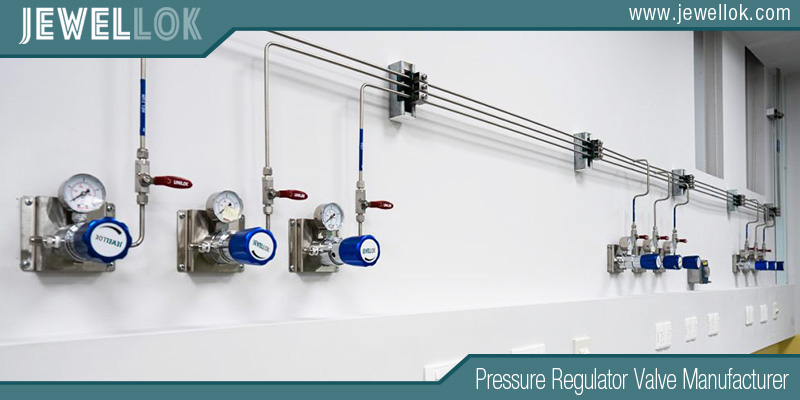
Conclusion
A single-stage propane regulator is a marvel of mechanical engineering, transforming hazardous high-pressure gas into a safe, usable resource through balanced forces and precise components. By understanding its workings, users can appreciate its role in daily life and prioritize safety. Whether grilling or heating, this device ensures reliability—proving that sometimes, the simplest solutions are the most effective.
For more about a closer look at how a single-stage propane regulator works, you can pay a visit to Jewellok at https://www.jewellok.com/ for more info.
Recent Posts
The Adjustable Back Pressure Regulator Application Guide
What is a High Pressure Argon Gas Regulator?
How a Gauged Two-Stage Propane Gas Pressure Regulator Works
The Best Natural Gas Pressure Regulators Manufacturers in USA
How to Choose the Right Laboratory Gas Valves
The Top High Pressure Hydraulic Needle Valve Manufacturer in 2025
Tags
Recommended Products
-

Semi Automatic Oxygen Nitrogen Helium Argon Gas Changeover Manifold Manual Gas Changeover Manifold Panel For Gas Cylinders
-

Integrated Gas System (IGS) Modular Integrated Gas Systems (TMS) Integrated Gas Supply System For Semiconductor And Laboratory
-
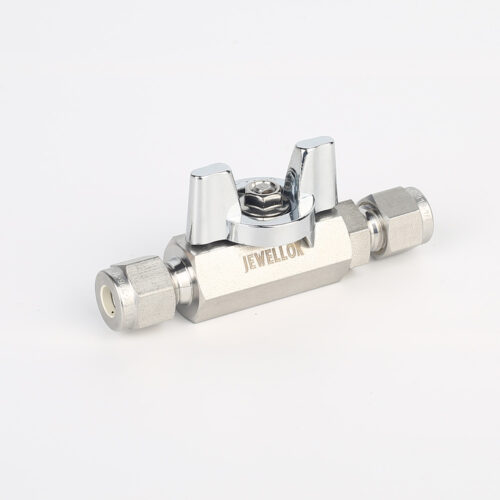
Stainless Steel High-Purity High Temperature Metal Seated Ball Valves JBV3 Series
-
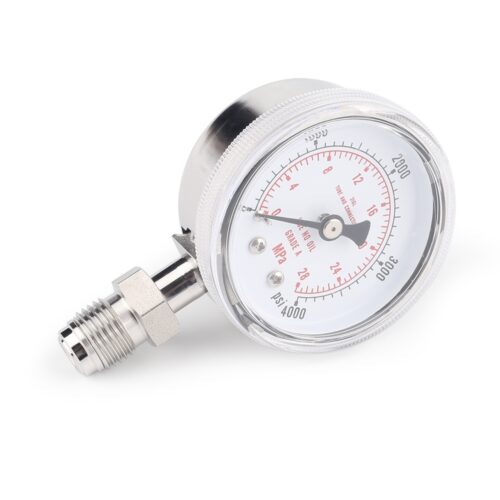
Ultra High Purity Oxygen Pressure Gauge For Semiconductor Gases JG Series Pressure Instruments For Semiconductor Manufacturing
-
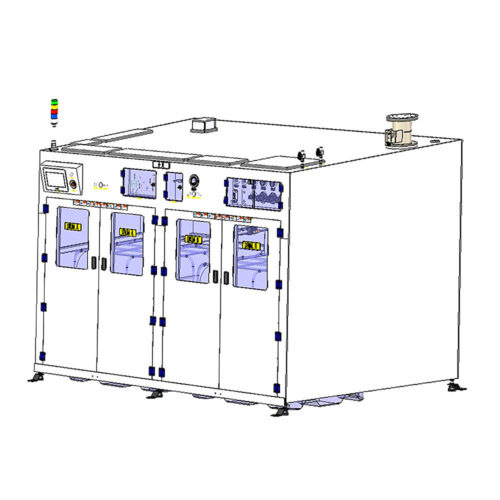
High Purity Chemical Dispense System & Packing System For Semiconductors JW-200L-CDM & JW-1000L-CDM
-
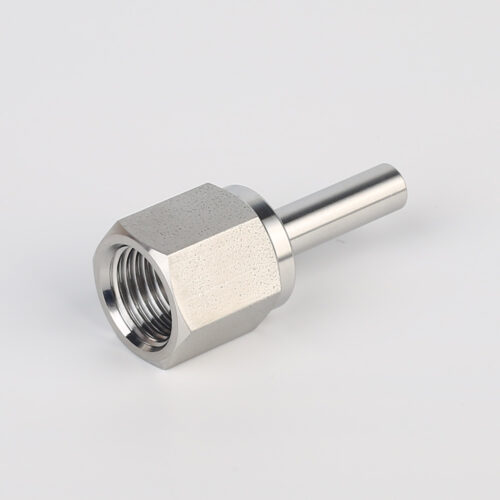
739LF High Purity Female Adapter Tube To Pipe Fittings And Connectors
-

High Purity Stainless Steel Mini Tube Butt Weld Fittings For Semiconductor
-
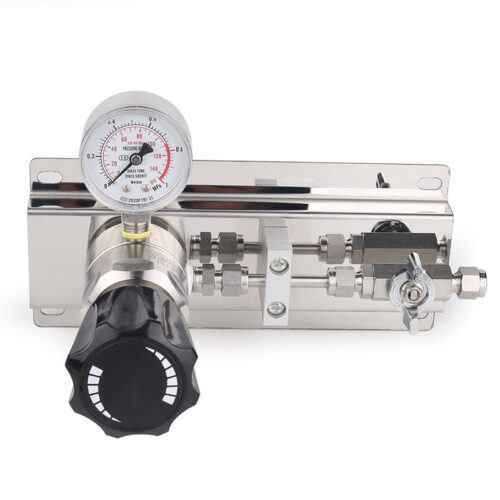
Medical Oxygen Single Stage Manual Gas Changeover Manifold Panel High-Purity Two-Stage Manual Gas Manifold Gas Pressure Control Panels